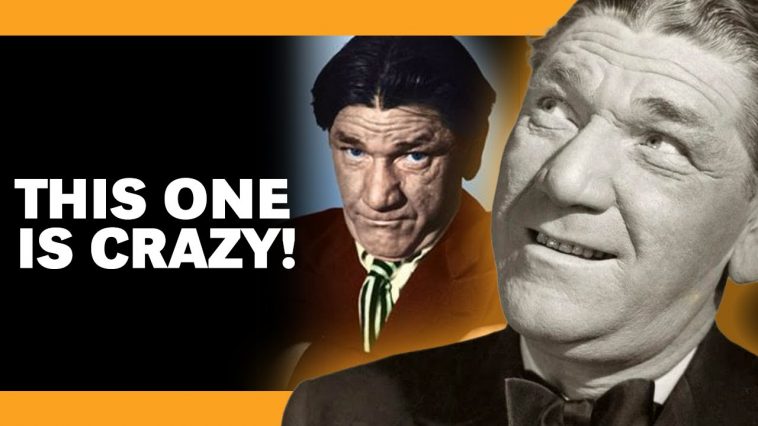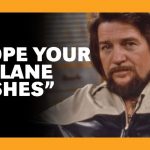By the mid-1950s, the beloved slapstick comedy troupe the Three Stooges had suffered the loss of iconic member Curly Howard. And previous member Shemp Howard had to brought back in to replace him. Shemp went on to pass away himself only a few years after returning to the troupe. Of which he had one of the founding members. Upon Shemp’s death in 1955, the Three Stooges had four shorts that had yet to completed. Because of this, a stand-in had to used to finish filming the scenes that supposed to have required Shemp.
Many years later, director Sam Raimi would coin the term “fake Shemp” in homage to this phenomenon while working on his debut feature The Evil Dead. The term has come to used in many situations. And some people don’t even realize that the term is in reference to the Three Stooges! Join Facts Verse as Shemp Howard’s death had some devastating consequences.
The Term “Fake Shemp” Coined by Sam Rami
For those who have never heard the term “fake Shemp”. The term created to refer to a body double that appears in a film or television series as a replacement for an actor or actress that has either passed away or is. For some other reason, unwilling to reprise a role that they popularized. Fake Shemps oftentimes require the use of heavy makeup and effects in order to trick the audience into not noticing. Of course, fake Shemps have become a good deal more convincing as time has gone on. But few people realize where the term originated. As it turns out, the term coined by director Sam Raimi on the set of his first film. And it coined as a tribute to his favorite comedy troupe.
Director Sam Rami has always had a soft spot for the Three Stooges. And the creation of the term “fake Shemp” during the production of his debut film The Evil Dead is just one way that the director has paid tribute to the beloved slapstick comedy troupe over the course of his career. The director’s coining of the phrase “fake Shemp”. It refers to a phenomenon that occurred on the set of four shorts filmed by the Three Stooges during the mid-1950s. In the immediate wake of the passing of original member Shemp Howard.
Shemp had one of the founding members of the Three Stooges, alongside brother Moe Howard and friend Larry Fine. However, Shemp ended up making his exit from the troupe shortly before it rose to superstardom. He then replaced in the troupe by his and Moe’s other brother, Curly, who became an even more popular member than Shemp.
The Three Stooges’ most iconic shorts feature Curly in the role of the third member instead of Shemp or any of Shemp’s later replacement. However, Curly tragically passed away in 1952. Following this, the two remaining members of the Three Stooges extended an invitation to Shemp to return. Shemp decided that he was willing to come back and be there for his brother, and the original lineup of the Three Stooges was reborn. Sadly, Shemp would end up following in Curly’s footsteps only a few years later. With the founding member of the Three Stooges passing away in 1955. Join Facts Verse as Shemp Howard’s death had some devastating consequences.
The Three Stooges Needed a Replacement for Shemp
Upon the passing of Shemp Howard, the two remaining members of the Three Stooges put in an uncomfortable position. There four shorts that they had been working on that had yet to be completed. And each of the shorts still had some scenes that needed to be filmed. Many of these scenes required the presence of Shemp, and this created a major problem for the troupe. They contractually required to finish the shorts. And they’re going to have to figure out a way to do it without their third member.
The four shorts that the Three Stooges had to complete called Rumpus in the Harem, Hot Stuff, Scheming Schemers, and Commotion on the Ocean. Of course, these then went on to become the four Three Stooges shorts featuring fake Shemps. By the mid-1950s, the slapstick comedy troupe was already losing a good deal of the popularity that it had garnered over the course of the 1940s. With the troupe’s comedy becoming increasingly child-centric. This reduced popularity caused Columbia Pictures to decrease the budget allotted for Three Stooges shorts. And this meant that many of the shorts from around the time of Shemp Howard’s death already taking ample advantage of stock footage to fill in gaps where the reduced budget didn’t allow for new footage to be filmed.
The fact that stock footage already used in shorts made by the Three Stooges by the time of Shemp’s death. Meant that the remaining two members could get away with using stock footage of Shemp. To fill in a good deal of the blanks in the four shorts that they needed to complete in order to stay on good terms with the studio. However, stock footage not going enough to get the job done completely.
While a good deal of stock footage certainly used to cover up Shemp’s death. Moe and Larry also came to the conclusion that they could simply use a fake Shemp, and the rest is history! If you’re enjoying this video so far, be sure to hit the like button to show your support! Also, subscribe to the channel if you’d like to be among the first to know when more Facts Verse videos are on their way!
The Original Fake Shemp Was Joe Palma
When Moe Howard and Larry Fine got the idea to use a fake Shemp for the remaining four shorts that had yet to completed in the wake of Shemp Howard’s death. They knew just who to turn to! It said to have been director Jules White who first recommended the actor Joe Palma. Who a contract player with Columbia Pictures that often used for bit parts in the studio’s films. Joe was just the right size to be a body double for the deceased Shemp. Though he didn’t have Shemp’s facial features or mannerisms. Because of this, the crew had to be very careful about how it went about using Joe Palma as it’s stand-in for the late Shemp Howard.
The main ways that the Three Stooges attempted to convince the audience that Joe Palma was actually Shemp Howard were by only filming the actor from behind. And by obscuring his face with some object on the film set. As a bit contract player for Columbia Pictures. Joe Palma had already worked on a few Three Stooges shorts as a supporting character. Because of this, Moe Howard and Larry Fine already had a positive working relationship with the man. Joe Palma would go on to continue appearing as supporting characters in the troupe’s shorts after the Three Stooges hired on Joe Besser as it’s new third member.
The four aforementioned shorts that had yet to finished upon Shemp Howard’s death are the only Three Stooges shorts featuring Joe Palma as a fake Shemp. However, as established, the term “fake Shemp” wouldn’t coined until around three decades later. When Sam Rami was directing his debut feature The Evil Dead. The production of The Evil Dead was notoriously difficult as a result of the film’s miniscule budget. Partway into the filming, many of the actors and actresses that Sam had hired for the movie ended up having to quit because they couldn’t stay committed to the project over the course of it’s long period of filming. Given that Sam was a big fan of the Three Stooges. The director was well aware of how the slapstick comedy troupe had handled the death of Shemp Howard.
The Term Originated on the Set of The Evil Dead
Taking inspiration from his favorite slapstick comedy troupe. Sam Rami used himself and his friends as body doubles to finish the filming of The Evil Dead without the majority of the actors and actresses that he had hired on for the project. The director ended up doing a pretty good job. And went on to coin the term “fake Shemp” for the film’s end credits. This the first time that the term had ever used in an official capacity. Though fans of the Three Stooges likely knew exactly what Sam Rami was trying to say.
The Evil Dead listed several fake Shemps in it’s end credits, including Sam Raimi himself. Sam’s brother Ted, as well as star Bruce Campbell. Sam’s use of fake Shemps in The Evil Dead was incredibly effective. And the director would continue using the term to credit body doubles on the sets of many of his subsequent features. Including his two sequels to The Evil Dead. The Evil Dead’s second sequel, which named Army of Darkness. Featured over a dozen fake Shemps listed over the course of it’s end credits. Since Sam coined the term, “fake Shemp” has come to used as a general way to describe a body double that has hired on for the sole purpose of replacing an actor or actress that has either passed away or doesn’t want to reprise a role.
The morality of using fake Shemps changed with the filming of Back to the Future Part II. Director Robert Zemeckis had asked Crispin Glover to return to reprise his role from the first film,. Though Crispin wanted more money than the budget allowed. Because of this, Robert didn’t bring back Crispin. And instead used a fake Shemp to fool the audience into thinking that the actor was still around. This fake Shemp ended up being so convincing that it caused Crispin to sue the film’s production. And it deemed that using fake Shemps to replace actors that were still alive wasn’t morally sound. However, fake Shemps are still used in events where an actor or actress has passed away while filming a role and their estate grants permission to the respective production.
Some other famous examples of fake Shemps in films include the body double used for Paul Walker in the Fast & Furious franchise. As well as the body double used for Bela Lugosi on the set of Plan 9 from Outer Space. Now it’s time to here from you: did you know that the term “fake Shemp” coined by director Sam Rami. And that the term is meant to pay tribute to a phenomenon that occurred on the set of a few shorts made by beloved slapstick comedy troupe the Three Stooges back in the mid-1950s? As always, like this video to show your support. And subscribe and hit the notification bell if you’d like to be among the first to know when more Facts Verse videos are on their way!



